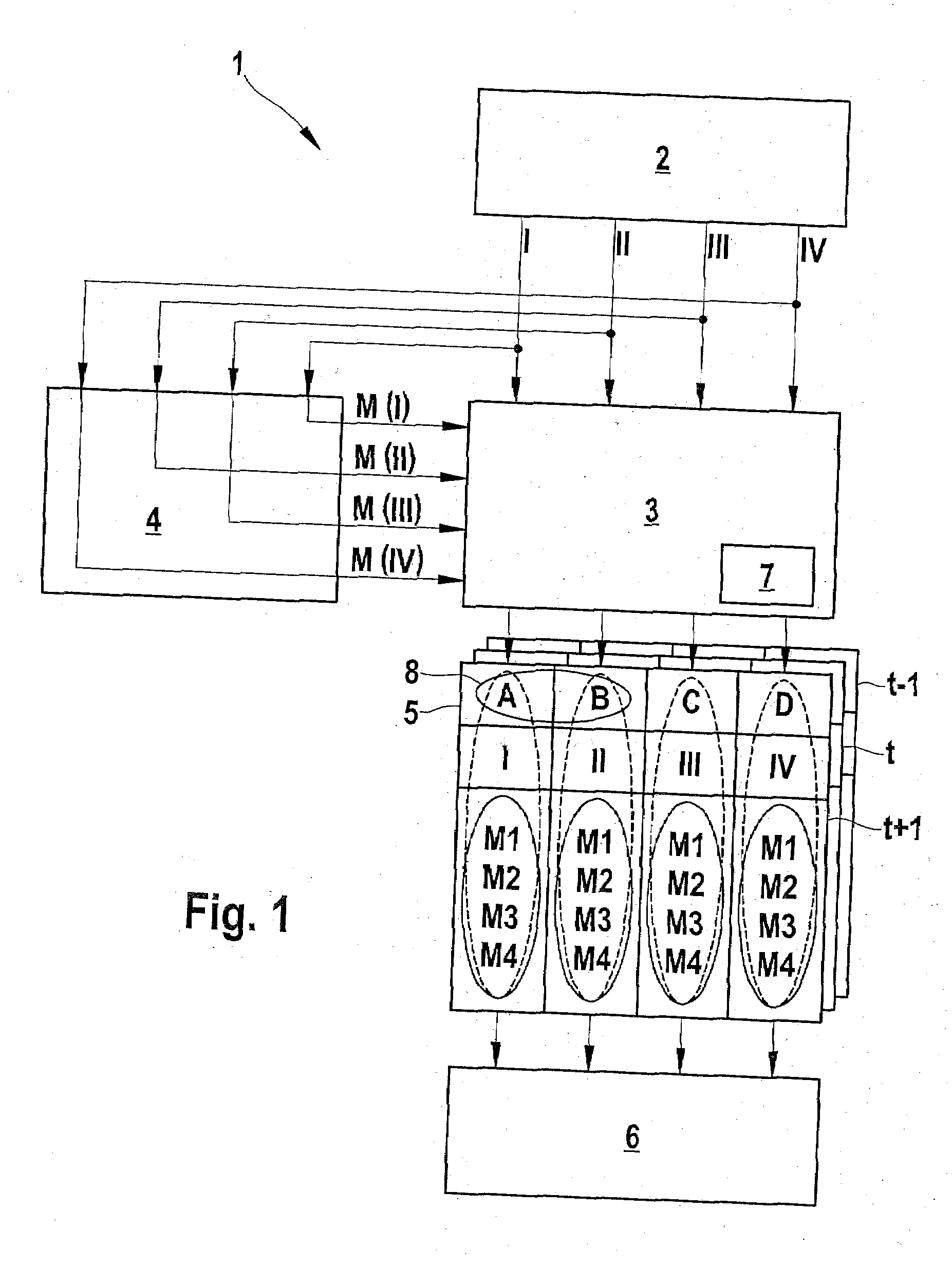Apparatus, method and computer program for image-based tracking of surveillance objects
a technology of surveillance objects and apparatus, applied in the field of apparatus, method and computer program for image-based tracking of surveillance objects, can solve the problems that the failure of surveillance mistakes from decreasing attentiveness or lack of attention cannot be prevented, and achieve the effects of saving computation time, more-precise knowledge, and enhanced detection and tracking security
- Summary
- Abstract
- Description
- Claims
- Application Information
AI Technical Summary
Benefits of technology
Problems solved by technology
Method used
Image
Examples
Embodiment Construction
[0043]FIG. 1 shows a schematic block diagram of an apparatus 1 for image-based tracking of surveillance objects in front of a scene background; the apparatus 1 can be and / or is connected to one or more cameras (not shown). An object segmentation module 2 receives the image data of the camera or cameras and determines moving object areas I, II, III and IV by comparing current camera images with a reference image of the scene. The reference image of the scene is modeled, for instance by long-term observation of the surveillance scene, manual input, or the like. The moving object areas detected are forwarded on the one hand to an administration module 3 and on the other to a feature detection module 4 for further processing.
[0044]The administration module 3 assigns a surveillance object A, B, C, D to the moving object areas I, II, III, IV and stores this assignment in memory in a data field 5. For instance, in data field 5, the surveillance object A is assigned to the object area I. Th...
PUM
 Login to View More
Login to View More Abstract
Description
Claims
Application Information
 Login to View More
Login to View More - R&D
- Intellectual Property
- Life Sciences
- Materials
- Tech Scout
- Unparalleled Data Quality
- Higher Quality Content
- 60% Fewer Hallucinations
Browse by: Latest US Patents, China's latest patents, Technical Efficacy Thesaurus, Application Domain, Technology Topic, Popular Technical Reports.
© 2025 PatSnap. All rights reserved.Legal|Privacy policy|Modern Slavery Act Transparency Statement|Sitemap|About US| Contact US: help@patsnap.com



